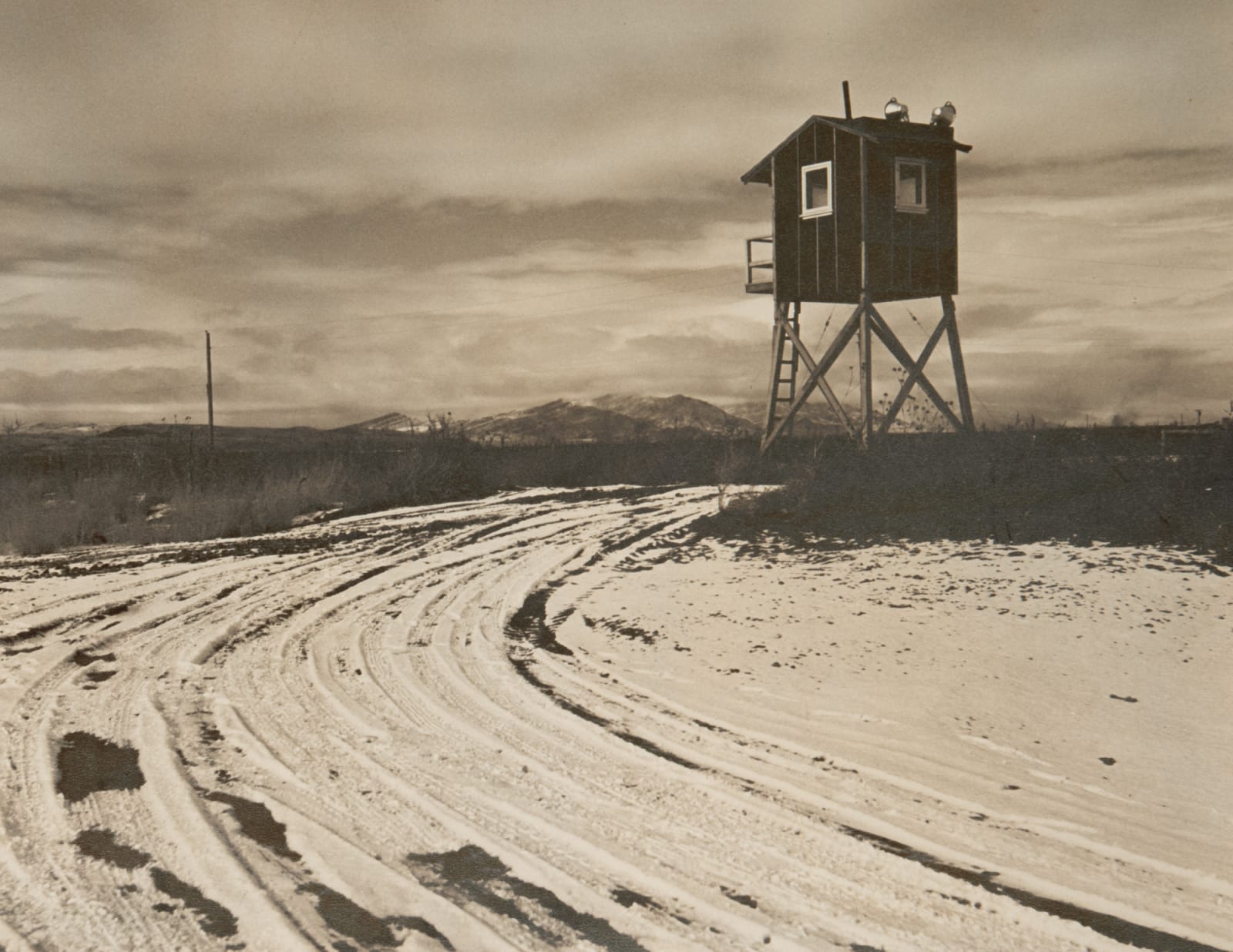Kameo Kido
Watchtower, Topaz, Utah, 1940s
Silver print
11 x 14 inches
Mounted to larger presentation board
With photographer's credit, title, notations, in manuscript
and stamped "Wichita Photography Salon" exhibition credit verso.
Mounted to larger presentation board
With photographer's credit, title, notations, in manuscript
and stamped "Wichita Photography Salon" exhibition credit verso.
Sold
This stark and haunting photograph of a snow-covered road and imposing watch tower at the Topaz War Relocation Center was created by Japanese American commercial artist Kameo Kido. It is...
This stark and haunting photograph of a snow-covered road and imposing watch tower at the Topaz War Relocation Center was created by Japanese American commercial artist Kameo Kido. It is a rare example of the use of salon photography / camera club culture as a means to document the American concentration camps of WWII. The image was exhibited at the Wichita Salon of Photography. There is evidence of at least one other salon label that have been removed. Kido also showed work with the California Camera Club in the 1950s.
Kameo Kido was a Japanese American photographer that lived and worked in California. Kido was born on September 31, 1902 in Japan and later immigrated to the United States. During WWII, Kido and his wife, Tomiko, were interned at Topaz War Relocation Center located in Delta, Utah where he worked in the service department. After the camp was dissolved in 1945, Kido returned to California where he set up a studio in San Francisco. He worked throughout the 1940s and 50s in California, contributing his photographs to publications relevant to Japanese American life such as The Pacific Citizen. He also photographed civil rights activist Franklin H. Williams in 1956. He died in March of 1975.
Kameo Kido was a Japanese American photographer that lived and worked in California. Kido was born on September 31, 1902 in Japan and later immigrated to the United States. During WWII, Kido and his wife, Tomiko, were interned at Topaz War Relocation Center located in Delta, Utah where he worked in the service department. After the camp was dissolved in 1945, Kido returned to California where he set up a studio in San Francisco. He worked throughout the 1940s and 50s in California, contributing his photographs to publications relevant to Japanese American life such as The Pacific Citizen. He also photographed civil rights activist Franklin H. Williams in 1956. He died in March of 1975.
